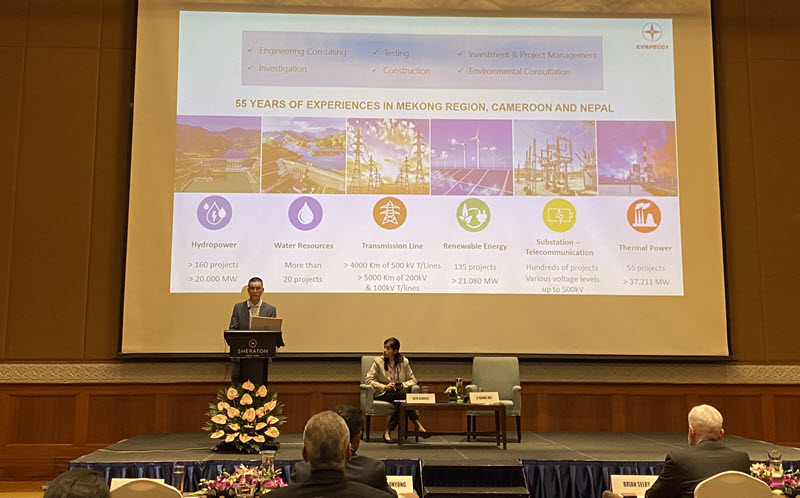In recent years, Asian countries have stepped up their efforts to decarbonize economies and increase the share of renewable energy resources in energy field. The countries have pledged to undertake net-zero emissions in response to climate change and sustainable development. Among these energy sources, hydropower is a valuable resource to ensure low-carbon energy development and meet the growing energy demand. So far, the installed hydropower capacity in Asia stood at 594 GW as of end-2021, recording a 4 percent increase compared to the previous year. Hydropower accounts for nearly 40 percent of the output of renewable energy generation in the region. It quickly responds to various loads and system disturbances and offers efficient peak demand support. Besides, the flexibility and storage capacity of HEPs offers efficient and economical support for balancing intermittent renewable energy resources such as solar and wind.

Mr. Le Quang Huy - engineer of EVNPECC1 made a presentation in the Conference
The Conference took place with the participation of many experts from large organizations and corporations in countries including India, Nepal, Singapore, Thailand, Indonesia, Philippines, Laos, etc., EVNPECC1 was proud to participate in the Conference with the presentation “Hydropower Development in Vietnam – Past, present, and future”. The presentation outlines hydropower development in Vietnam from the French colonist period to date, as well as the future hydropower development in Vietnam according to the Power Plan VIII.
Speaking at the conference, Mr. Le Quang Huy - engineer of EVNPECC1 said about some issues arising when preparing the planning such as environmental and social issues. In addition, the existing pumped storage projects have not covered areas with lots of renewable energy, hydropower projects which are under operation, are taking so many other tasks against the original design requirements such as flood control/water supply in the downstream in the central and southern regions, as well as stricter environmental requirements, etc. In the future, it is necessary to include more strict requirements on climate into the hydropower planning, development, and construction as well as operation and maintenance strategies.
The mission of the conference is to highlight upcoming opportunities, identify unresolved issues and challenges, and discuss the future outlook for the hydropower segment in Asia. The conference will also provide a platform to showcase new and promising technologies, best practices in construction methods, and O&M strategies, as well as noteworthy projects in the region. The main subjects discussed in the Conference are:
- Country plans and perspective
- O&M and asset management strategies
- Digitalization and Automation of HEPs
- R&M of HEPs
- Investments trends and challenges
- Focus on pumped storage technologies
- Hybrid Technologies (Floating solar, etc.,)
- Regional power trading and cross-border collaboration
- Role of hydropower plants toward net zero
- Experience and opportunities in small hydropower
- Transmission infrastructure requirements
- Costs and tariffs
- Advances in turbines and generators
- Tunneling and underground works
- Project Showcase